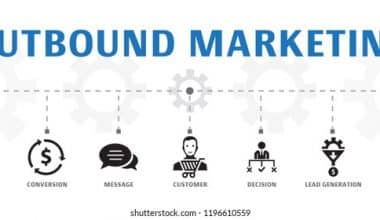A comprehensive plan helps projects run smoothly and efficiently. When it comes to marketing, a marketing brief acts as a blueprint for a marketing campaign or project. It provides a proper overview of the concepts/goals of the marketing campaigns and keeps all team members updated and aligned with the project’s main objectives. Mastering how to write a marketing brief is an essential skill for marketers in almost all organizations. Therefore, we have designed this comprehensive guide to help you master how to write an inspiring marketing brief.
Part 1. What Is a Marketing Brief?
A marketing brief is a document that provides a comprehensive overview of a specific marketing initiative, campaign, or project. It is meant to act as a guide for the team members, stakeholders, and executives to make everyone aligned with the objectives, tactics, and deliverables.
Think of the marketing brief as a seed that grows the entire campaign. A well-documented marketing brief ensures that your marketing campaign runs efficiently from concept and planning to execution and completion. It becomes a reference point throughout the campaign to ensure the project remains on track.
A marketing brief has all the important information about the marketing project/campaign in one place. Typically, the key components of a marketing brief are as follows:
- Introduction/Background: This first section briefly introduces your company. It can include a short company history, the current position in the market, and the company goals.
- Objectives: This section presents the main goals the current marketing campaign tends to accomplish. The goals can relate to lead generation, brand awareness, sales targets, and similar goals.
- Target Audience: This section outlines the campaign’s targeted audience, which includes both primary and secondary audiences. It can also present relevant details of the targeted audience, such as psychographics, demographics, etc.
- Content: This section highlights the key content/message the campaign intends to convey to the audience.
- Budget: This section specifies the approximate budget for the current marketing campaign.
- Timeline: This section details the timeline of the campaign. It can include milestone-based deadlines.
- Deliverables: This section lists the expected deliverables/outcomes of the campaign. It can include events, content pieces, ads, etc.
- Guidelines about Tone/Branding: This section highlights the proper guidelines about the tone, style, and other branding elements to use in the campaign.
- KPIs: This section lists the key performance indicators (KPIs) or metrics to evaluate the campaign’s success.
- Additional Materials: This section presents any additional material relevant to the campaign, like customer insights, market research, statistics of past campaigns, etc.
A marketing brief can or cannot include all the above components. It mainly depends on the marketing campaign and the style your organization tends to follow.
Part 2. Why You Need Research (a Marketing Brief)?
The key to creating a perfect marketing brief is thorough “Research”. Why you need to do proper research before crafting a marketing brief is evident from the below key reasons:
- Identify Market Trends: Research helps to uncover the latest market trends and create relevant campaigns.
- Understand Target Audience: Research helps to better understand the target audience, such as their needs, pain points, expectations, etc.
- Competitor Analysis: Research helps to evaluate the marketing strategies of competitors to find areas where you can get a competitive edge.
- Budget Optimization: Research helps to shortlist the most impactful marketing strategies and channels. This way, you can allocate the budget wisely.
- Deliver an Impactful Narrative: Research helps to understand which narrative can be most impactful to the audience. This makes the campaign effective and compelling.
- Realistic Goals: Research helps to set realistic and measurable goals for the marketing campaign.
In short, research is the best companion when crafting marketing briefs and ensures that all your efforts lead to fruitful outcomes.
Part 3. How to Create/Write a Marketing Brief?
Now that we have cleared the basics of a marketing brief, the next step is to learn how to write a marketing brief. Here are the 9 steps you have to follow to write a perfect marketing brief:
Step 1. Identify the Project Purpose
Before writing the marketing brief, the first step is to identify the project’s purpose. For that, discuss the marketing campaign’s purpose with the executives and stakeholders. Properly understand what the company intends to achieve with this campaign. This can be about:
- More website traffic
- Higher sales
- Increased brand awareness
Once the purpose of the marketing brief becomes clear, it becomes much easier to set the objectives, target audience, and strategies.
Step 2. Write Briefly About the Company’s Background and the Project Purpose
The first thing to write in the marketing brief is a quick company overview. This part should narrate what the company does and briefly describe its mission. Keep this part confined to one paragraph only.
Right after the company background, you should briefly talk about the project’s purpose. It can be a 1-2 sentence explanation in broad terms about what this project intends to accomplish. After that, you can also add a project summary paragraph if you want to present the summary of the project and its strategies.
Step 3. Set Project Goals and Objectives
The next section is crafting the project goals and objectives. Here, you have to list the project goals and objectives of the project. They can be like:
- Increase sales by $3,000 per month
- Increase website traffic by 15%
Make sure the project goals you list are measurable, relevant, and achievable,
Step 4. Determine Your Target Audience
Next, you have to determine what is the target audience for this marketing campaign project. This will help your team to strategize the right marketing approach. For that, you have to research deeply about the target audience and get their demographic and psychographic details, like:
- Age
- Gender
- Location
- Income
- Interests
- Behaviors
- And more.
So, determine and research your target audience and then write down the details in the marketing brief.
Step 5. List Target Audience Pain Points
After you have determined the target audience, you can specify what their pain points or challenges are. This will later help in crafting the marketing content according to these pain points.
Step 6. Outline the Project Strategy
Now, you have to outline the campaign strategy you will follow. This should specify all the key elements of your campaign strategy, such as:
- Key messages
- Marketing channels to be used (social media, PPC, email, etc.)
- Content strategy (blog posts, images, videos, etc.)
- Campaign guidelines (tone of voice, branding guidelines, visual identity, etc.)
In short, this section will outline all the essential details to understand how the marketing campaign will be executed. This way, all members will become aligned with the common strategy.
Step 7. Set Deliverables
Next, you have to specify what this campaign will produce and deliver. For that, you have to list all the items the marketers will create and deliver, such as
- Blog posts
- Social media graphics
- Brochures
- PPC ads
- Flyers
- Press releases
You can be more specific here by specifying the format and specification of the content to ensure quality and consistency.
Step 8. Set a Realistic Timeline
Now that the project strategy and deliverables are set, it’s time to set a realistic timeline for the project. The best approach here is to break down the project into phases and assign timeframes to each phase.
Step 9. Finalize Budget
Finalize the budget for this campaign with the finance team and executives. Once you have the total budget figure, divide the budget into each portion of the campaign, such as:
Total Budget: $100,000
- Social media advertising: $50,000
- Influence collaborations: $30,000
- Other marketing efforts: $20,000
That’s it! This way, you can create a marketing brief with all the essential details the marketing team, stakeholders, and executives need to understand this marketing campaign.
Below is a sample marketing brief template based on the structure discussed above:
Marketing Brief
Prepared by: [Creator’s name]
Date: [Date]
Company overview: [Briefly describe the company’s background and mission].
Project purpose: [Specify the project’s purpose in 1-2 sentences].
Project goals and objectives: [List the project goals and objectives].
Target audience: [Specify the details about the target audience].
Pain points: [List target audience pain points].
Marketing strategy: [List the complete marketing strategy, including key messages, marketing channels to be used, content strategy, and campaign guidelines].
Deliverables: [Specify the project deliverables].
Project timeline: [Specify the project timeline based on different phases].
Contacts: For any inquiries regarding this project, please reach out to:
[Contact Name] [Position] [Email] [Phone Number]Part 4. Marketing Brief Templates
Now that you have learned how to write a marketing brief, let’s take a look at a few marketing brief templates to get a solid grip on its elements.
Marketing Brief Example 1: Launching a New Product Line
Marketing Brief
Prepared by: John Doe
Date: May 27, 2024
Company overview: XYZ Corp’s mission is to enhance everyday life through technology. The organization values innovation and wants to accomplish market leadership in consumer electronics.
Project purpose: The purpose of this project is to successfully launch a new product line aimed at increasing brand presence in the market.
Project summary: This project will use a multifaceted approach to introduce a new line of smart home devices to the market, including targeted marketing campaigns and influencer partnerships.
Goals and objectives: The project aims to reach the following goals:
- Increase sales by $5,000 per month within the first six months.
- Boost website traffic by 20% during the launch period.
- Achieve a 50% brand awareness increase in the target market.
Target audience: Our target audience is:
- Age: 25-45
- Gender: All
- Location: Urban areas in the USA
- Income: $50,000+
- Interests: Technology, home automation, smart living
- Behaviors: Early adopters of technology, online shoppers
Target audience pain points: The main pain points of the target audience include:
- Difficulty in integrating multiple smart devices.
- High cost of smart home technology.
- Concerns about data privacy and security.
- Lack of user-friendly interfaces.
- Limited understanding of the benefits of smart home devices.
Marketing strategy: The marketing strategy includes:
- Key Messages: “Smart living made easy and affordable.”
- Marketing Channels: Social media, PPC, email marketing, influencer collaborations
- Content Strategy: Blog posts, demo videos, user testimonials
- Campaign Guidelines: Friendly and approachable tone, consistent branding across all materials
Deliverables: The project requires the following deliverables:
- 10 blog posts on smart home trends
- 20 social media graphics and posts
- 5 influencer collaboration videos
- 10 PPC ad variations
- 1 product launch press release
Project timeline: We will conduct our campaign throughout the summer, spanning June, July, and August, with weekly evaluations and adjustments to our advertising strategy based on data insights and customer feedback.
- Market Research and Planning: May 1 – May 31, 2024
- Content Creation: June 1 – June 30, 2024
- Campaign Launch: July 1, 2024
- Ongoing Adjustments and Monitoring: July 1 – August 31, 2024
- Post-launch Review: September 1 – September 15, 2024
Budget: The budget for this project is $120,000, which includes:
- $60,000 for social media advertising
- $40,000 for influencer collaborations
- $20,000 for other marketing efforts
Contacts: For questions about this project, please contact:
Jane Smith
Marketing Manager
jane.smith@xyzcorp.com
(555) 123-4567
Marketing Brief Example 2: Increasing Brand Awareness
Marketing Brief
Prepared by: Alice Johnson
Date: May 27, 2024
Company overview: ABC Ltd.’s mission is to provide premium skincare products while committing to sustainability and cruelty-free practices. The organization values eco-friendliness and wants to accomplish a strong presence in the European market.
Project purpose: The purpose of this project is to enhance brand awareness and recognition in the European market.
Project summary: This project will use a multifaceted approach to raise brand awareness, including social media campaigns, influencer marketing, and content marketing.
Goals and objectives: The project aims to reach the following goals:
- Achieve a 30% increase in brand recognition in target countries by December 2024.
- Drive 10,000 new website visitors monthly.
- Generate 5,000 new social media followers within three months.
Target audience: Our target audience is:
- Age: 18-35
- Gender: Female
- Location: Major cities in Europe
- Income: $40,000+
- Interests: Skincare, beauty, sustainable products
- Behaviors: Frequent online shoppers, active on social media
Marketing strategy: The marketing strategy includes:
- Key Messages: “Sustainable beauty, uncompromised quality.”
- Marketing Channels: Social media, influencer marketing, SEO, content marketing
- Content Strategy: Blog articles on skincare tips, product tutorials, customer stories
- Campaign Guidelines: Eco-friendly tone, emphasis on sustainability, visually appealing content
Deliverables: The project requires the following deliverables:
- 15 blog articles
- 25 social media posts and stories
- 7 influencer partnerships
- 5 video tutorials
- 1 comprehensive SEO strategy
Project timeline: We will run our campaign from June to November, with ongoing assessments and adjustments based on performance data.
- Audience Research and Strategy Planning: May 1 – May 31, 2024
- Content Creation and Partnership Setup: June 1 – July 31, 2024
- Campaign Launch and Monitoring: August 1 – November 30, 2024
- Post-Campaign Analysis: December 1 – December 15, 2024
Budget: The budget for this project is $80,000, which includes:
- $30,000 for social media advertising
- $30,000 for influencer collaborations
- $20,000 for SEO and content marketing
Contacts: For questions about this project, please contact:
Robert Brown
Head of Marketing
robert.brown@abcltd.com
(555) 987-6543
Marketing Brief Example 3: Boosting E-commerce Sales
Marketing Brief
Prepared by: Sarah Lee
Date: May 27, 2024
Company overview: DEF Online Store’s mission is to offer a wide range of fashion and lifestyle products to enhance everyday living. The organization values customer satisfaction and wants to accomplish significant growth in online sales.
Project purpose: The purpose of this project is to significantly boost e-commerce sales through a targeted marketing campaign.
Project summary: This project will use a multifaceted approach to increase online sales, including social media advertising, email marketing, and retargeting ads.
Goals and objectives: The project aims to reach the following goals:
- Increase monthly sales by $10,000 within three months.
- Improve website conversion rate by 5%.
- Reduce cart abandonment rate by 10%.
Target audience: Our target audience is:
- Age: 20-40
- Gender: All
- Location: Nationwide (USA)
- Income: $35,000+
- Interests: Fashion, online shopping, lifestyle products
- Behaviors: Regular online shoppers, price-sensitive consumers
Target audience pain points: The main pain points of the target audience include:
- Difficulty finding trendy and affordable fashion.
- Concerns about product quality and fit.
- High shipping costs or slow delivery times.
- Frustrations with the online shopping experience, including complicated checkouts.
- Lack of personalized shopping recommendations.
Marketing strategy: The marketing strategy includes:
- Key Messages: “Trendy, affordable fashion delivered fast.”
- Marketing Channels: Social media, email marketing, retargeting ads, affiliate marketing
- Content Strategy: Product showcases, customer reviews, special offers and discounts
- Campaign Guidelines: Trendy and vibrant tone, clear call-to-actions, user-friendly content
Deliverables: The project requires the following deliverables:
- 12 product showcase blog posts
- 30 social media ads and posts
- 8 email marketing campaigns
- 15 retargeting ad variations
- 1 major seasonal sale announcement
Project timeline: We will run our campaign from June to September, with ongoing assessments and adjustments based on weekly data reviews.
- Market Analysis and Strategy Formulation: May 1 – May 31, 2024
- Content Creation and Ad Setup: June 1 – July 31, 2024
- Campaign Launch and Optimization: August 1 – September 30, 2024
- Post-Campaign Review: October 1 – October 15, 2024
Budget: The budget for this project is $90,000, which includes:
- $40,000 for social media advertising
- $20,000 for email marketing
- $30,000 for retargeting and affiliate marketing
Contacts: For questions about this project, please contact:
Michael Green
Marketing Director
michael.green@defonlinestore.com
(555) 321-6789
To create these marketing brief templates, we have used the UPDF AI online tool. You can also use this online AI assistant to easily craft a complete marketing brief based on your specified instructions. All you have to do is specify the format and instruct the AI with a text prompt to get a complete marketing brief.
Conclusion
A marketing brief is an important document to prepare before initiating a marketing campaign. It brings everyone on board with the campaign goals, strategy, and deliverables. In this guide, we have discussed in detail how to write a marketing brief easily in 9 steps. So, now it’s your turn to create it. Follow the above 9 steps and craft a marketing brief for your upcoming marketing campaign.






